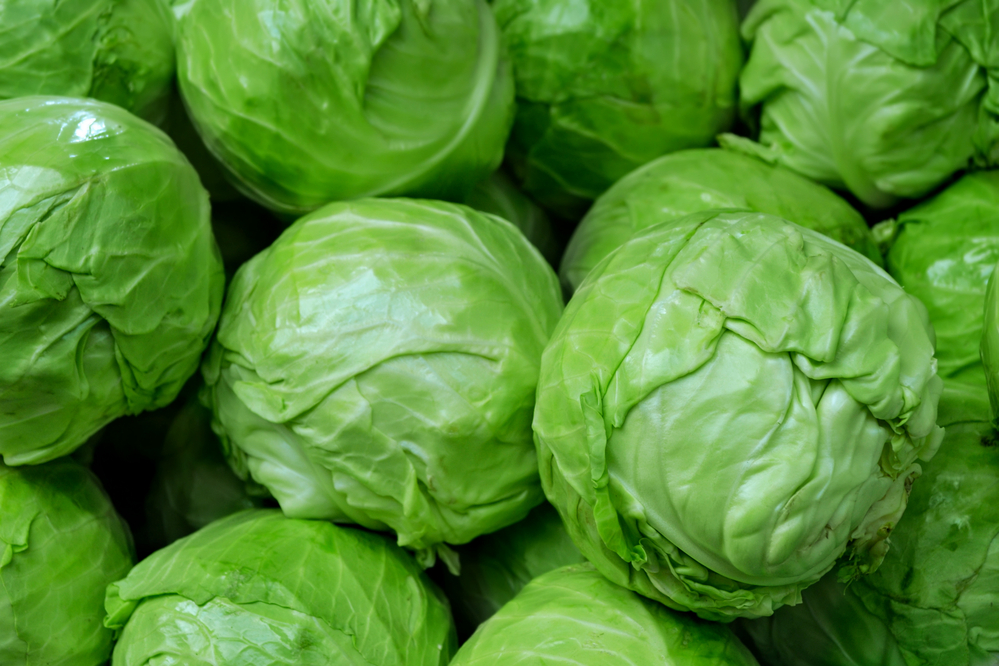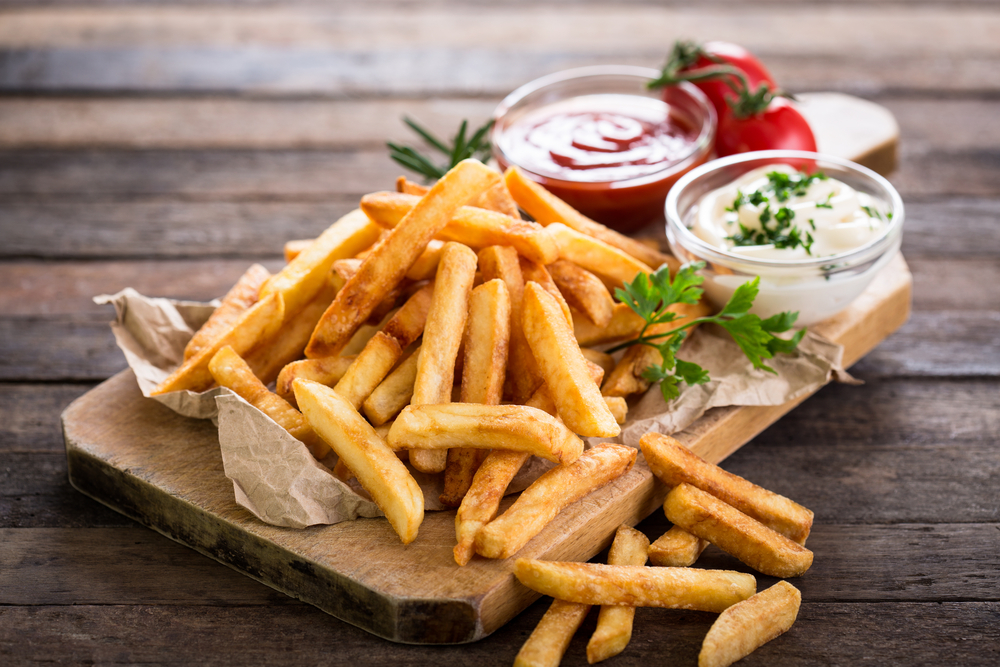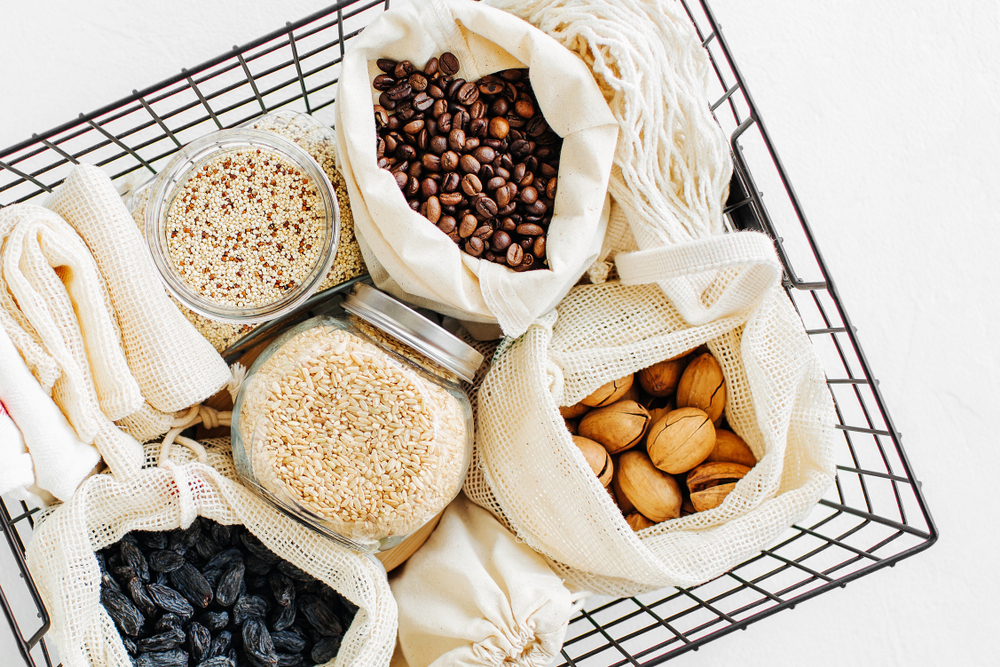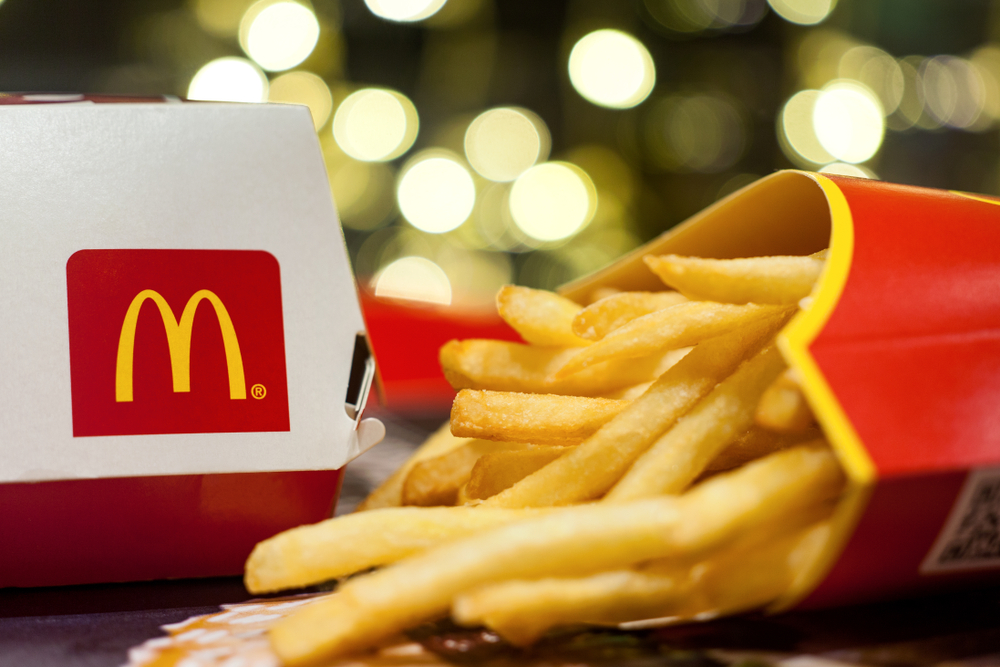Freezing cabbage is an excellent way to preserve this nutritious vegetable and extend its shelf life. It can be used in a variety of dishes, from soups and stews to salads and stir-fries, making it a versatile ingredient to have on hand.
However, it’s crucial to know the proper techniques for freezing cabbage to ensure that it retains its flavor, texture, and nutrients. In this article, I will share my knowledge and experience on how to freeze cabbage.
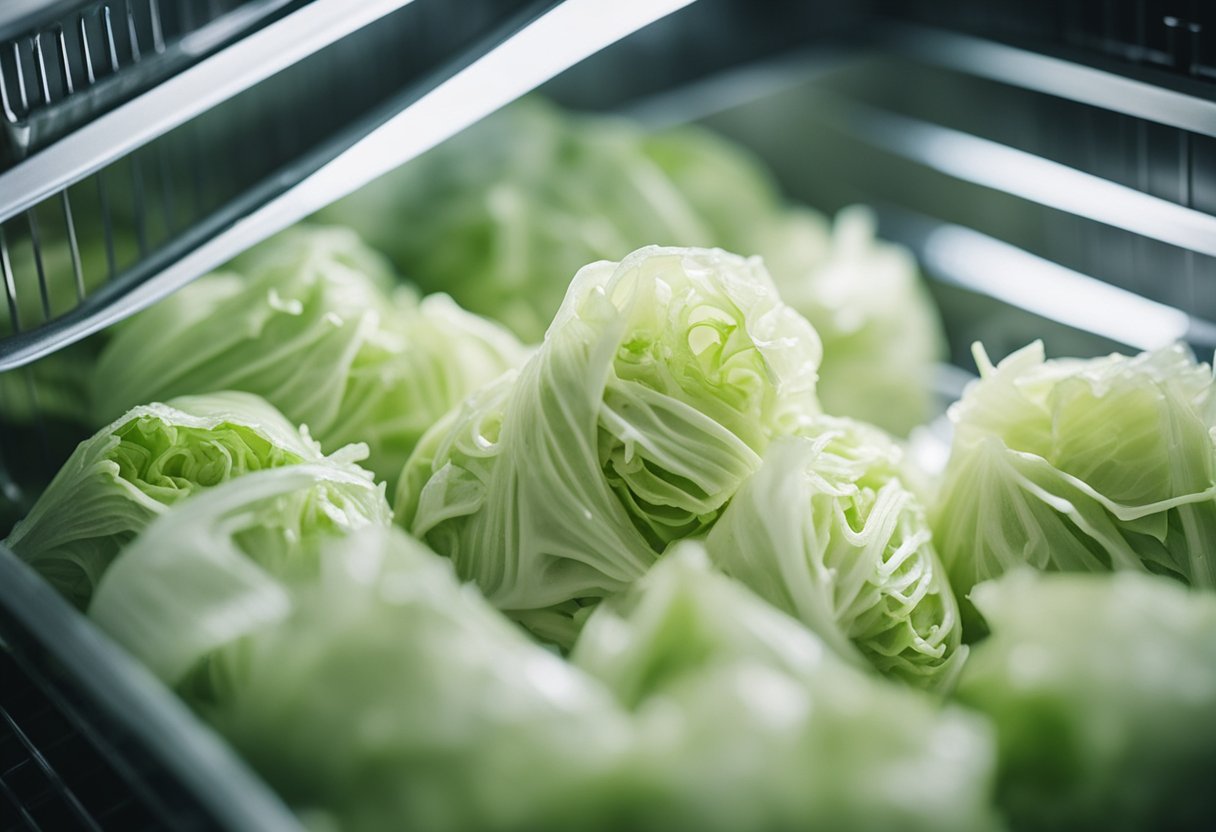
Before we dive into the process of freezing cabbage, let’s discuss the types of cabbage that are suitable for freezing.
While all types of cabbage can be frozen, some varieties, such as Napa cabbage, savoy cabbage, and bok choy, are more delicate and may not freeze well.
On the other hand, green and red cabbage are sturdier and freeze beautifully. It’s also essential to choose fresh and firm cabbage heads for freezing. Now that we know which types of cabbage to freeze let’s move on to the necessary tools and materials.
Key Takeaways
- Choose fresh and firm cabbage heads for freezing.
- Blanching is necessary to preserve the cabbage’s flavor, texture, and nutrients.
- Frozen cabbage can be used in a variety of dishes, from soups and stews to salads and stir-fries.
Types of Cabbage Suitable for Freezing
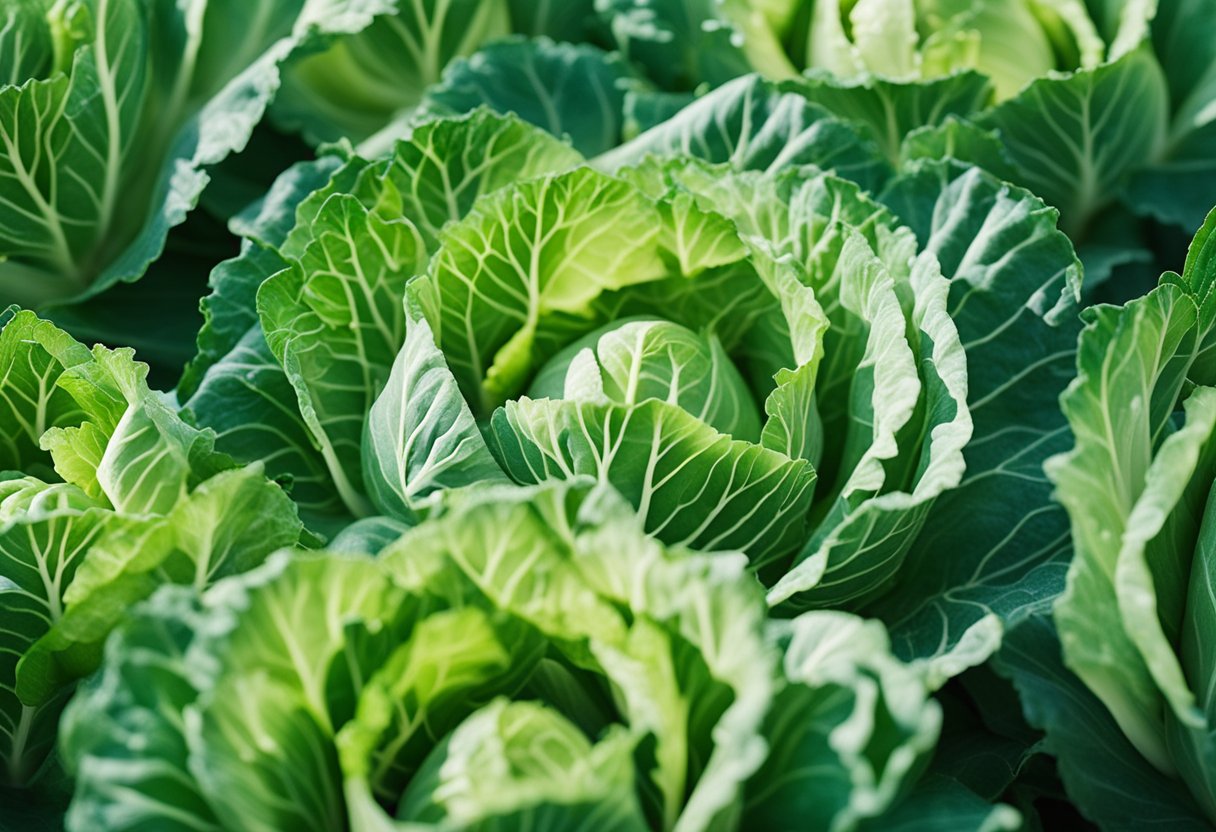
When it comes to freezing cabbage, not all types of cabbage are created equal. Some types of cabbage are better suited for freezing than others. Here are the types of cabbage that are suitable for freezing:
Green Cabbage
Green cabbage is the most common type of cabbage, and it is also the most suitable for freezing. It has a firm texture and a mild flavor, which makes it a great choice for a variety of dishes. Green cabbage can be shredded or chopped before freezing, and it can be blanched or unblanched.
Red Cabbage
Red cabbage is another type of cabbage that is suitable for freezing. It has a slightly sweeter and more robust flavor than green cabbage, and it is often used in salads and slaws. Red cabbage can be shredded or chopped before freezing, and it can be blanched or unblanched.
Savoy Cabbage
Savoy cabbage is a type of cabbage that has crinkly leaves and a mild flavor. It is often used in soups and stews, and it is also suitable for freezing. Savoy cabbage can be shredded or chopped before freezing, and it can be blanched or unblanched.
Bok Choy
Bok choy is a type of Chinese cabbage that is often used in stir-fries and soups. It has a mild flavor and a tender texture, which makes it a great choice for freezing. Bok choy can be chopped or sliced before freezing, and it can be blanched or unblanched.
Fresh Cabbage
Fresh cabbage is another type of cabbage that is suitable for freezing. It has a crisp texture and a mild flavor, which makes it a great choice for salads and slaws. Fresh cabbage can be shredded or chopped before freezing, and it can be blanched or unblanched.
In summary, green cabbage, red cabbage, savoy cabbage, bok choy, and fresh cabbage are all suitable for freezing. Each type of cabbage has its own unique flavor and texture, which makes it a great choice for a variety of dishes.
When freezing cabbage, it is important to choose the right type of cabbage and to prepare it properly for freezing.
Necessary Tools and Materials
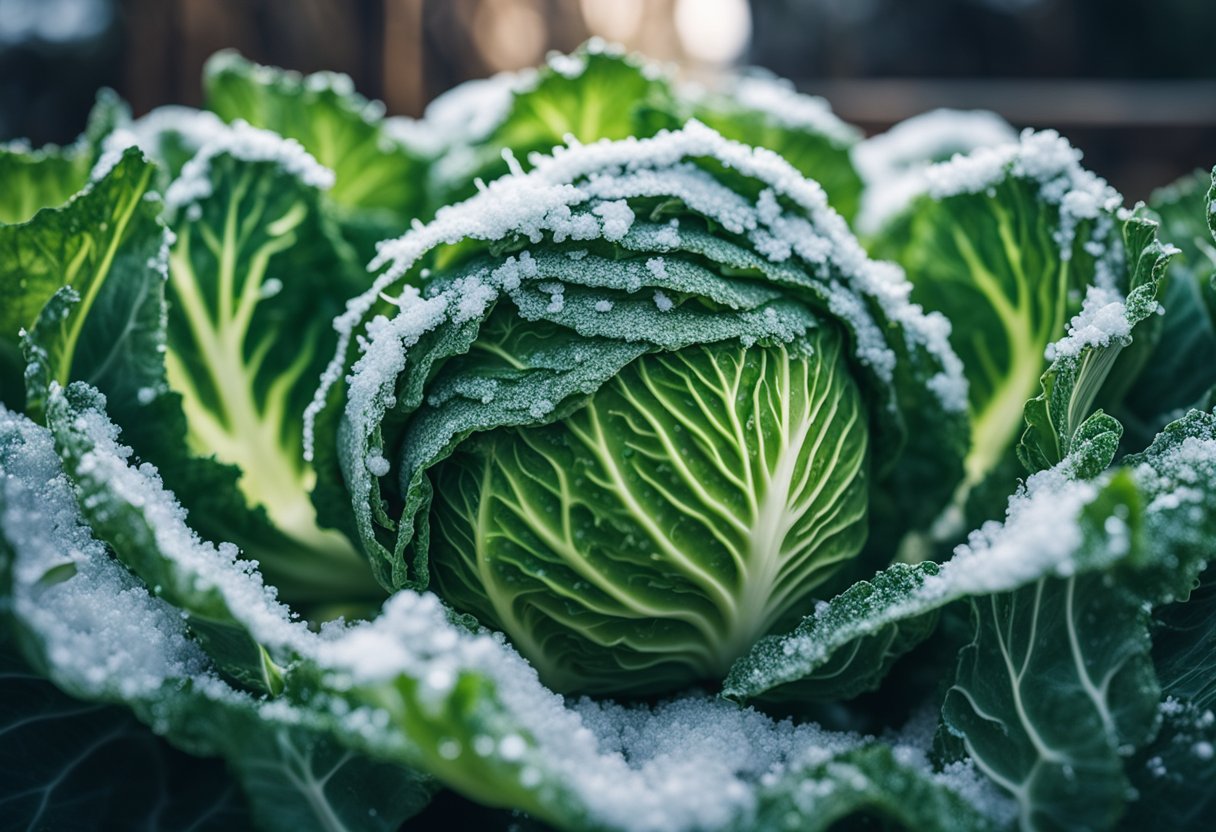
Kitchen Utensils
To freeze cabbage, you will need a few kitchen utensils. Here is a list of the necessary kitchen utensils:
- Cutting board
- Sharp knife
- Large pot or Dutch oven
- Slotted spoon or tongs
- Bowl
You will need a cutting board and a sharp knife to cut the cabbage into quarters. A large pot or Dutch oven will be required to blanch the cabbage.
You will need a slotted spoon or tongs to remove the cabbage from the pot. A bowl will be required to hold the ice water that will be used to shock the cabbage after blanching.
Storage Materials
After blanching and freezing the cabbage, you will need storage materials to keep the cabbage fresh. Here is a list of the necessary storage materials:
- Freezer bags or zip-top freezer bags
- Cookie sheet
- Airtight container
Freezer bags or zip-top freezer bags will be required to store the blanched cabbage in the freezer. A cookie sheet will be required to freeze the cabbage before transferring it to the freezer bags.
An airtight container will be required to store the frozen cabbage in the freezer if you do not want to use freezer bags.
In summary, to freeze cabbage, you will need a cutting board, sharp knife, large pot or Dutch oven, slotted spoon or tongs, bowl, freezer bags or zip-top freezer bags, cookie sheet, and an airtight container. Make sure to have all the necessary tools and materials on hand before starting the freezing process.
Preparing the Cabbage
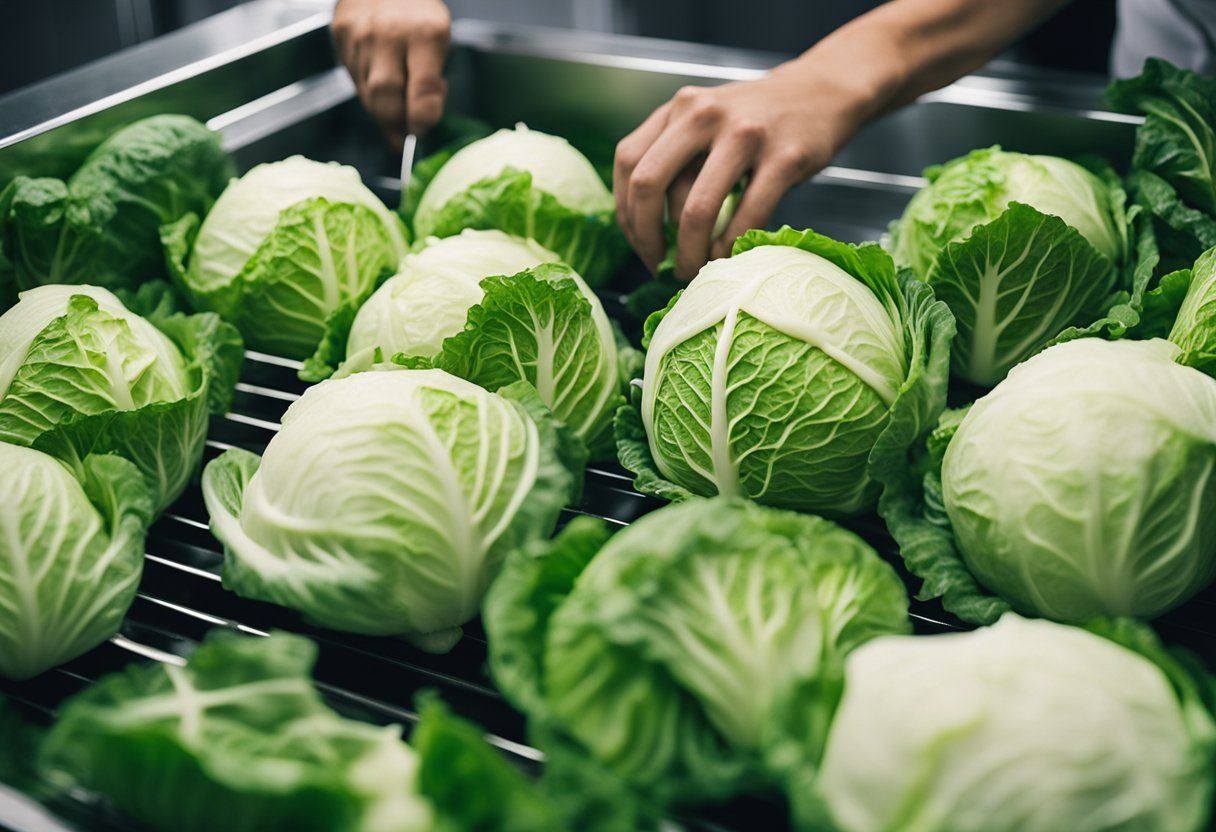
Before freezing cabbage, it’s important to prepare it properly to ensure that it stays fresh and tasty. Here are the steps to follow:
Cleaning the Cabbage
First, rinse the cabbage under cold running water to remove any dirt or grit. If you notice any damaged or wilted leaves, remove them and discard them. Next, fill a large bowl with cold water and add a tablespoon of salt.
Soak the cabbage in the saltwater solution for about 30 minutes to help remove any insects that may be hiding in the leaves. After soaking, rinse the cabbage under cold running water again to remove any remaining salt or debris.
Cutting the Cabbage
To freeze cabbage, you can either cut it into wedges or shred it. If you’re cutting the cabbage into wedges, first remove the tough core from the bottom of the cabbage using a sharp knife and a cutting board. Then, cut the cabbage into wedges of your desired size.
If you’re shredding the cabbage, cut it into quarters and remove the core, then shred the cabbage using a sharp knife or a food processor.
It’s important to note that if you’re planning to blanch the cabbage before freezing, you should cut it into uniform pieces to ensure that they cook evenly. Regardless of how you plan to freeze your cabbage, make sure that you use a sharp knife to avoid damaging the leaves and to make the process easier.
By following these simple steps, you can prepare your cabbage for freezing and ensure that it stays fresh and delicious until you’re ready to use it.
Blanching Process
Blanching is an essential process for freezing cabbage. It helps to preserve the texture, flavor, and color of the cabbage. In this section, I will explain how to blanch whole and shredded cabbage.
Blanching Whole Cabbage
To blanch a whole cabbage, follow these steps:
- Bring a large pot of water to a boil.
- Add salt to the boiling water. The general rule is to add 1 tablespoon of salt per 4 quarts of water.
- Remove the outer leaves of the cabbage and cut out the core.
- Place the cabbage in the boiling water and let it cook for 3 to 4 minutes.
- Remove the cabbage from the boiling water and immediately transfer it to a bowl of ice water. This will stop the cooking process and help to preserve the texture and color of the cabbage.
- Let the cabbage cool in the ice water for 3 to 4 minutes.
- Remove the cabbage from the ice water and let it drain.
Blanching Shredded Cabbage
To blanch shredded cabbage, follow these steps:
- Bring a large pot of water to a boil.
- Add salt to the boiling water. The general rule is to add 1 tablespoon of salt per 4 quarts of water.
- Add the shredded cabbage to the boiling water and let it cook for 1 to 2 minutes.
- Remove the cabbage from the boiling water and immediately transfer it to a bowl of ice water. This will stop the cooking process and help to preserve the texture and color of the cabbage.
- Let the cabbage cool in the ice water for 1 to 2 minutes.
- Remove the cabbage from the ice water and let it drain.
In both cases, it is important to use a large pot of water to blanch the cabbage. This will ensure that the cabbage cooks evenly and that the blanching process is effective. Additionally, using ice water to cool the cabbage after blanching is crucial to preserving the quality of the cabbage.
Freezing Process
When it comes to freezing cabbage, there are a few methods you can use depending on your preferences and how you plan to use the cabbage later on. In this section, I will cover the three most common methods for freezing cabbage: freezing whole cabbage, freezing shredded cabbage, and flash freezing cabbage.
Freezing Whole Cabbage
Freezing whole cabbage is a great option if you plan to use the cabbage for dishes like stuffed cabbage rolls or soups. Here’s how to do it:
- Start by washing the cabbage thoroughly and removing any damaged or wilted outer leaves.
- Cut the cabbage into quarters and remove the core.
- Blanch the cabbage quarters in boiling water for 1-2 minutes, then immediately transfer them to a bowl of ice water to stop the cooking process.
- Pat the cabbage dry with paper towels and place it on a cookie sheet. Make sure the cabbage quarters are not touching each other.
- Place the cookie sheet in the freezer for a few hours until the cabbage is frozen solid.
- Once the cabbage is frozen, transfer it to a freezer bag or airtight container. Label the container with the date and contents, then place it back in the freezer.
Freezing Shredded Cabbage
Freezing shredded cabbage is a good option if you plan to use the cabbage for coleslaw or stir-fries. Here’s how to do it:
- Start by washing the cabbage thoroughly and removing any damaged or wilted outer leaves.
- Shred the cabbage using a sharp knife or a food processor.
- Blanch the shredded cabbage in boiling water for 1-2 minutes, then immediately transfer it to a bowl of ice water to stop the cooking process.
- Drain the cabbage well and pat it dry with paper towels.
- Divide the shredded cabbage into portions and place each portion in a freezer bag. Make sure to remove as much air as possible from the bags before sealing them.
- Label the bags with the date and contents, then place them in the freezer.
Flash Freezing Cabbage
Flash freezing cabbage is a great option if you want to freeze cabbage quickly without it sticking together. Here’s how to do it:
- Start by washing the cabbage thoroughly and removing any damaged or wilted outer leaves.
- Cut the cabbage into small pieces or shred it using a food processor.
- Spread the cabbage pieces or shreds out in a single layer on a cookie sheet.
- Place the cookie sheet in the freezer for a few hours until the cabbage is frozen solid.
- Once the cabbage is frozen, transfer it to a freezer bag or airtight container. Label the container with the date and contents, then place it back in the freezer.
By following these methods, you can freeze cabbage without worrying about freezer burn or loss of flavor. Just make sure to label your containers with the date and contents so you can easily keep track of what’s in your freezer.
Using Frozen Cabbage
As previously mentioned, frozen cabbage can be used in a variety of recipes, including cabbage rolls, coleslaw, cabbage soup, slaws, and casseroles. Here are some tips on how to use frozen cabbage in your recipes.
Thawing Process
Before using frozen cabbage, it is important to properly thaw it. The best way to thaw frozen cabbage is to transfer it from the freezer to the refrigerator and let it thaw overnight.
If you are in a rush, you can also thaw frozen cabbage by placing it in a bowl of cold water. Make sure to change the water every 30 minutes until the cabbage is fully thawed.
Incorporating into Recipes
Once the frozen cabbage is thawed, it can be incorporated into your favorite recipes. Here are some ideas:
- Cabbage Rolls: Thaw the cabbage and use it as a filling for cabbage rolls. Simply mix the thawed cabbage with ground meat, rice, and spices, and roll the mixture into cabbage leaves. Place the rolls in a baking dish, cover with tomato sauce, and bake until cooked through.
- Coleslaw: Thaw the cabbage and use it to make coleslaw. Simply mix the thawed cabbage with shredded carrots, mayonnaise, vinegar, and sugar. Season with salt and pepper to taste.
- Cabbage Soup: Thaw the cabbage and use it to make a hearty cabbage soup. Simply sauté onions and garlic in a pot, add thawed cabbage, chicken broth, and diced tomatoes. Season with salt, pepper, and your favorite herbs, and simmer until the cabbage is tender.
- Slaws: Thaw the cabbage and use it to make a variety of slaws. Simply mix the thawed cabbage with your favorite dressing and toppings, such as apples, nuts, and cheese.
- Casseroles: Thaw the cabbage and use it to make a delicious casserole. Simply mix the thawed cabbage with cooked pasta, ground meat, and tomato sauce. Top with cheese and bake until golden brown.
In conclusion, frozen cabbage is a versatile ingredient that can be used in a variety of recipes. By following the proper thawing process and incorporating it into your favorite dishes, you can enjoy the benefits of cabbage all year round.
Benefits and Shelf Life

As a cabbage lover, I know how frustrating it can be to watch your favorite vegetable go bad before you’ve had a chance to use it all. That’s why I love freezing cabbage – it’s an easy way to extend its shelf life and ensure that I can enjoy it all year round.
One of the main benefits of freezing cabbage is that it helps to preserve its freshness. Cabbage has a short season, and it can be difficult to find fresh cabbage outside of that season. By freezing cabbage, you can enjoy fresh-tasting cabbage all year long.
In addition to preserving freshness, freezing cabbage can also help to extend its shelf life. Cabbage typically lasts for about a week in the fridge, but it can last for up to 8 months in the freezer.
This means that you can stock up on cabbage when it’s in season and enjoy it throughout the year.
Another benefit of freezing cabbage is that it can help to reduce the growth of bacteria and slow down enzyme action. This can help to preserve the nutritional content of the cabbage, including its fiber content.
Fiber is an important nutrient that can help to support digestive health and reduce the risk of certain diseases.
Overall, freezing cabbage is a great way to extend its shelf life, preserve its freshness, and retain its nutritional content. Whether you’re a fan of coleslaw, soups, or casseroles, freezing cabbage is an easy way to ensure that you always have this versatile vegetable on hand.
Precautions and Tips

When it comes to freezing cabbage, there are a few precautions and tips you should keep in mind to ensure the best results. Here are some of the most important things to keep in mind:
Choose Fresh Cabbage
Before freezing cabbage, it is essential to choose fresh cabbage. Fresh cabbage will have a bright green color and firm leaves. Avoid cabbage with yellow or brown leaves or signs of damage or decay.
Wash and Dry Thoroughly
Whether you are freezing raw or cooked cabbage, it is crucial to wash and dry it thoroughly. Rinse the cabbage under running water and pat dry with a clean towel or paper towel. Moisture can cause freezer burn and affect the quality of the cabbage.
Blanch Raw Cabbage
If you are freezing raw cabbage, it is recommended to blanch it first. Blanching helps preserve the color, texture, and flavor of the cabbage. To blanch cabbage, bring a pot of water to a boil, add the cabbage, and cook for 1-2 minutes. Then, transfer the cabbage to a bowl of ice water to stop the cooking process.
Label and Date
When freezing cabbage, it is essential to label and date the freezer bags or containers. This will help you keep track of when the cabbage was frozen and ensure that you use it before it loses its quality.
Use Freezer-Safe Containers
When freezing cabbage, it is important to use freezer-safe containers or bags. Freezer burn can affect the quality of the cabbage, and using the right containers can prevent this from happening.
Make sure the containers are airtight and leave some space at the top for the cabbage to expand as it freezes.
By following these precautions and tips, you can freeze cabbage successfully and enjoy it all year round.
Related post: How to Freeze Swiss Chard
Frequently Asked Questions
How long can cabbage be frozen for?
Cabbage can be frozen for up to 12 months if it is stored properly in airtight containers or freezer bags. However, it is best to consume frozen cabbage within 6 to 8 months for best quality and taste.
What is the best way to freeze fresh cabbage?
The best way to freeze fresh cabbage is to first wash and soak the cabbage in cold water. Then, cut the cabbage into quarters or shred it into small pieces. Blanch the cabbage in boiling water for 1-2 minutes, then place it in a bowl of ice water to stop the cooking process.
Drain the cabbage and pat it dry with a paper towel. Finally, place the cabbage in airtight containers or freezer bags, label them with the date, and store them in the freezer.
Can raw cabbage be frozen without blanching?
Yes, raw cabbage can be frozen without blanching. However, blanching can help preserve the texture and color of the cabbage. If you decide to freeze raw cabbage, wash and dry it thoroughly, cut it into quarters or shred it into small pieces, and place it in airtight containers or freezer bags.
Can cabbage be vacuum sealed and frozen?
Yes, cabbage can be vacuum sealed and frozen. Vacuum sealing helps to remove excess air, which can cause freezer burn and reduce the quality of the cabbage.
To vacuum seal cabbage, follow the same steps as freezing fresh cabbage, but place the cabbage in vacuum-sealed bags instead of regular freezer bags.
How to thaw frozen cabbage?
To thaw frozen cabbage, remove it from the freezer and place it in the refrigerator for several hours or overnight. Alternatively, you can thaw it in the microwave or by placing the frozen cabbage in a bowl of cold water.
How to use frozen cabbage?
Frozen cabbage can be used in a variety of dishes, including soups, stews, casseroles, and stir-fries. However, frozen cabbage may be softer and have a slightly different texture than fresh cabbage. To use frozen cabbage, simply add it to your favorite recipes and cook as directed.




